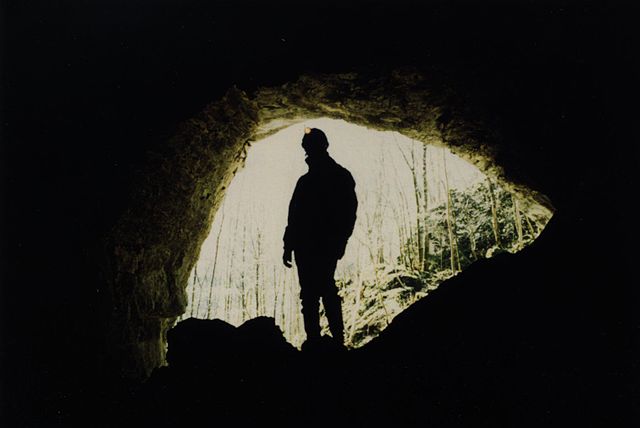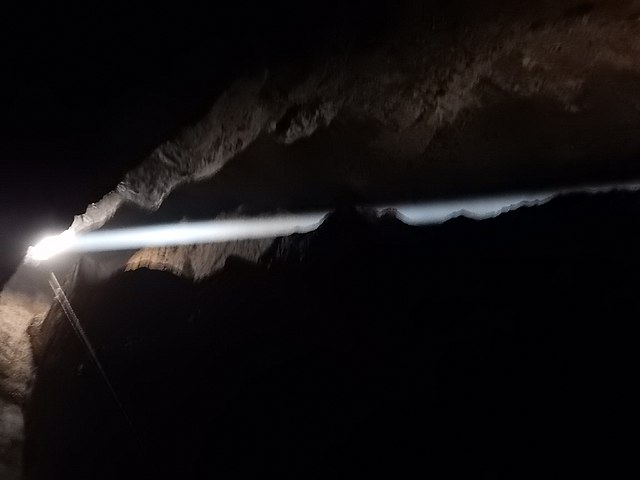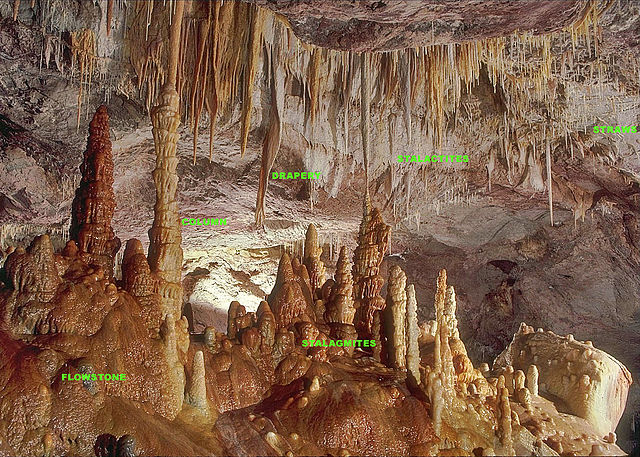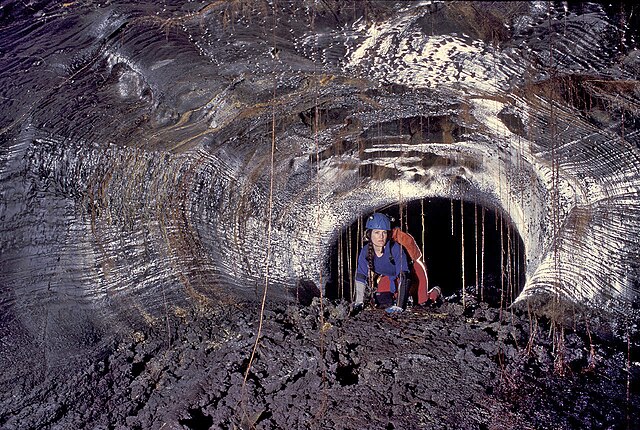Speleology is the scientific study of caves and other karst features, as well as their composition, structure, physical properties, history, ecology, and the processes by which they form (speleogenesis) and change over time (speleomorphology). The term speleology is also sometimes applied to the recreational activity of exploring caves, but this is more properly known as caving, potholing, or spelunking. Speleology and caving are often connected, as the physical skills required for in situ study are the same.
Grotte des Faux-Monnayeurs, Mouthiers-Haute-Pierre (France)
Beam of sun inside the cavity of Rocca ill'Abissu, Fondachelli Fantina, Sicily
Pirunkirkko (literally "devil's church") of Paistjärvi, a peak cave in Heinola, Päijänne Tavastia, Finland
Cave labeled with the six most common types of speleothems: flowstone, columns, drapery, stalagmites, stalactites and straws
A cave or cavern is a natural void in the ground, specifically a space large enough for a human to enter. Caves often form by the weathering of rock and often extend deep underground. The word cave can refer to smaller openings such as sea caves, rock shelters, and grottos, that extend a relatively short distance into the rock and they are called exogene caves. Caves which extend further underground than the opening is wide are called endogene caves.
Lechuguilla Cave, New Mexico, United States
Speleothems in Hall of the Mountain King of Ogof Craig a Ffynnon, a solutional cave in South Wales.
Exploring a lava tube in Hawaii.
Painted Cave, a large sea cave, Santa Cruz Island, California








